#Global water nonprofits
Explore tagged Tumblr posts
Text
The Best News of Last Week - August 21, 2023
🌊 - Discover the Ocean's Hidden Gem Deep down in the Pacific
1. Massachusetts passed a millionaire's tax. Now, the revenue is paying for free public school lunches.
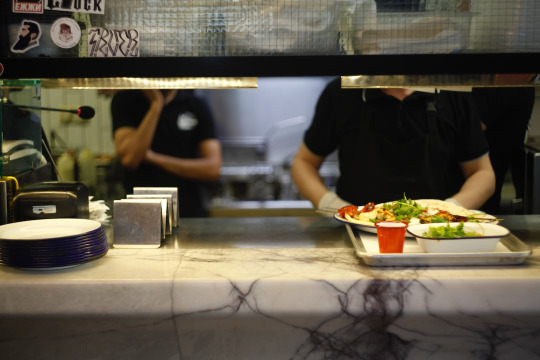
Every kid in Massachusetts will get a free lunch, paid for by proceeds from a new state tax on millionaires.
A new 4% tax on the state's wealthiest residents will account for $1 billion of the state's $56 billion fiscal budget for 2024, according to state documents. A portion of those funds will be used to provide all public-school students with free weekday meals, according to State House News Service.
2. Plant-based filter removes up to 99.9% of microplastics from water
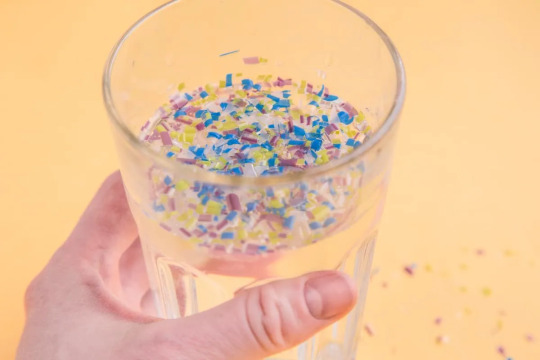
Researchers may have found an effective, green way to remove microplastics from our water using readily available plant materials. Their device was found to capture up to 99.9% of a wide variety of microplastics known to pose a health risk to humans.
3. Scientists Find A Whole New Ecosystem Hiding Beneath Earth's Seafloor
youtube
Most recently, aquanauts on board a vessel from the Schmidt Ocean Institute used an underwater robot to turn over slabs of volcanic crust in the deep, dark Pacific. Underneath the seafloor of this well-studied site, the international team of researchers found veins of subsurface fluids swimming with life that has never been seen before.
It's a whole new world we didn't know existed.
4. How solar has exploded in the US in just a year
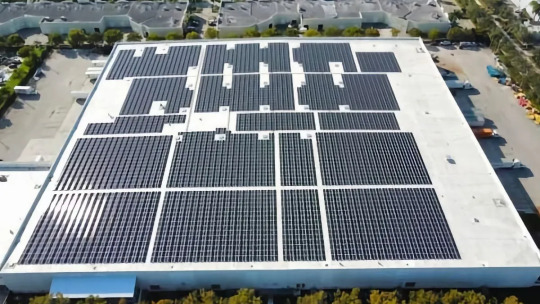
Solar and storage companies have announced over $100 billion in private sector investments in the US since the passage of the Inflation Reduction Act (IRA) a year ago, according to a new analysis released today by the Solar Energy Industries Association (SEIA).
Since President Joe Biden signed the IRA in August 2022, 51 solar factories have been announced or expanded in the US.
5. Researchers have identified a new pack of endangered gray wolves in California
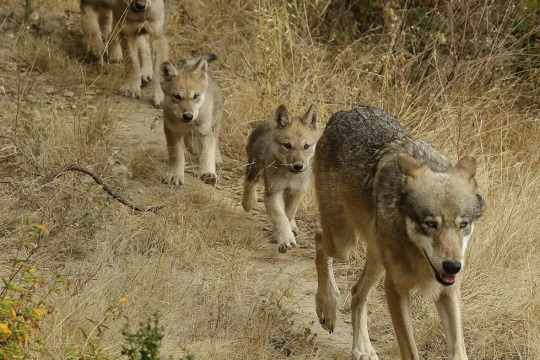
A new pack of gray wolves has shown up in California’s Sierra Nevada, several hundred miles away from any other known population of the endangered species, wildlife officials announced Friday.
It’s a discovery to make researchers howl with delight, given that the native species was hunted to extinction in California in the 1920s. Only in the past decade or so have a few gray wolves wandered back into the state from out-of-state packs.
6. Record-Breaking Cleanup: 25,000 Pounds of Trash Removed from Pacific Garbage Patch
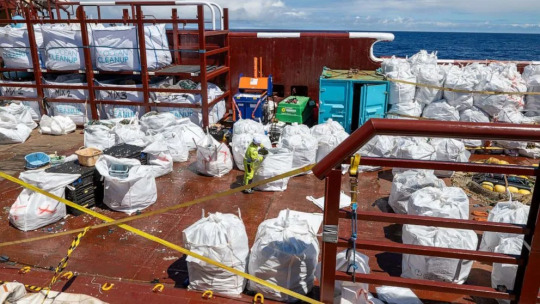
Ocean cleanup crews have fished out the most trash ever taken from one of the largest garbage patches in the world.
The Ocean Cleanup, a nonprofit environmental engineering organization, saw its largest extraction earlier this month by removing about 25,000 pounds of trash from the Great Pacific Garbage Patch, Alex Tobin, head of public relations and media for the organization
7. The Inflation Reduction Act Took U.S. Climate Action Global
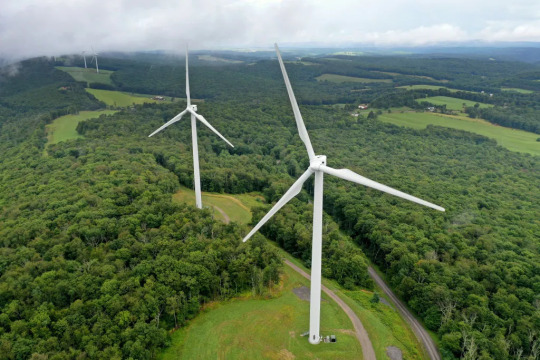
The U.S. Inflation Reduction Act (IRA) aimed to promote clean energy investments in the U.S. and globally. In its first year, the IRA successfully spurred other nations to develop competitive climate plans.
Clean energy projects in 44 U.S. states driven by the IRA have generated over 170,600 jobs and $278 billion in investments, aligning with Paris Agreement goals.
---
That's it for this week :)
This newsletter will always be free. If you liked this post you can support me with a small kofi donation here:
Buy me a coffee ❤️
Also don’t forget to reblog this post with your friends.
1K notes
·
View notes
Text
North Carolina Relief Masterlist
One of my close friends is currently living in North Carolina and took the time to put together this really nicely organized list of organizations currently taking donations after Hurricane Helene, and I thought it'd be nice to share it on tumblr as well since I know some folks like these kinds of organized lists! All links and descriptions come from her and her experiences with the orgs below. 👍
Foundation
The Community Foundation of WNC - Read no further if you want a catch-all, one stop donation spot for WNC long-term Helene response. CFWNC is a permanent pool of charitable capital for the 18 counties of Western North Carolina including the Qualla Boundary (land of the Eastern Band of Cherokee Indians). They are an amazing source of consistent support to many WNC nonprofits via grant opportunities. They have financially supported so many of the non-profits I have encountered or worked with. Donate to the cause of your choice via CFWNC (including the Helene response specifically) here.
Food Security, Farm Support & More
Bounty & Soul (Swannanoa Valley, Black Mountain, and Asheville) - decade-old non-profit currently typically focused on health and food insecurity now working in partnership with World Central Kitchen, MANNA, Hearts with Hands, and many others to distribute food, hot meals, and supplies. They are also working to resume purchasing and distributing fresh produce from farmers in WNC who still have crops to harvest and sell. Donate to their disaster relief here.
Annie’s Culinary Garden - I often frequent this small but mighty Black Mountain restaurant, which is closely partnered with Bounty & Soul. Annie’s was already embedded in health and food justice work pre-Helene but the last 2 weeks, Annie and her team have been working around the clock (using a generator to power their restaurant) to provide free vegan, vegetarian, and other diet-specific hot meals to retirement homes, distribution hubs, and also to feed the staff and volunteers at these hubs. This has been a huge need expressed to me by community members because much of the food available at distribution sites is not able to be eaten by those requiring special diets. Donate to their effort here.
Haywood Christian Ministry (Waynesville) - WNC’s largest food pantry has partnered with MANNA (WNC's largest food bank?) and is distributing food on the ground and requesting donations to help with the emergency disaster response. They are also directly purchasing from WNC farms to distribute fresh foods for folks cooking bulk hot meals and for families who can cook at home. For info and to donate, go here.
Food Connection(Asheville-based) - I first encountered this org at a food waste solutions summit and thought their concept was brilliant. They rescue high-quality, chef-prepared meals and deliver them to neighbors in need (often those who can’t afford to participate regularly in Asheville’s expensive foodie culture). I have since seen them out in Asheville and beyond to rural communities doing exactly what they do best and delivering delicious, no-cost hot meals to Helene victims. Donate to them here.
Foothills Food Hub (McDowell County) - McDowell was hit really hard and this hub is working to source water and shelf-stable goods to distribute. They will continue to feed vulnerable populations and to support farmers with direct purchasing and a reliable market. Requesting monetary donations, which can be made online here.
TRACTOR Food & Farms (Spruce Pine*, Mitchell County) - In another hard-hit county, this hub is also working, much like the Foothills Food Hub, on connecting local farmers with folks in a system of equitable healthy food access in rural communities. Donate to this local food hub here.
*Interesting aside: Spruce Pine and its quartz mines were extremely damaged by flooding and this threatens the global tech industry. This rural town is home to one of the world’s only sources of high-purity quartz. The mines are currently trying to re-open.
MANNA FoodBank (Asheville) - This very large organization is still doing what they do best and distributing food, water, and more, despite having their warehouse/headquarters were destroyed in the flooding along the Swannanoa River. Donate online here.
Farmer Support & Advocacy
Appalachian Sustainable Agriculture Project (ASAP) (WNC) - this wide-reaching farmer advocacy org is currently reestablishing communications with WNC farmers and getting aid to them. They also have healthy food programs that, once operating again, will serve tangentially in the relief effort. I have worked adjacent to this org for the last year and am a dogged cheerleader of them and their work. Donations can be made here.
Center for Environmental Farming Systems (Qualla Boundry and WNC) - CEFS works closely with the Eastern Band of Cherokee Indians, NC State, extension services and more to support food and farm initiatives across WNC. I previously worked adjacent to this org and was extremely impressed by their commitment and effectiveness. Donate (ideally to “Friends of CEFS” for more flexible funding) here.
Tierra Fértil Coop (Hendersonville) - social and economic farmer cooperative formed by a group of Hispanic community members living in Henderson County that grows and provides culturally-specific foods but also has community programs to support the Latinx community in Henderson county. I have attended some of their educational events and have worked adjacent to them. I am ever impressed by their work. Donate to them by emailing [email protected].
Economic Justice & More
Pisgah Legal Services (all over WNC) - these folks do just about everything “life admin” for WNC's most vulnerable populations and have done so for over forty years. They provide pro bono civil legal aid, health insurance enrollment, and more. I have worked adjacent to them over the last year and could not be more impressed by their broad scope of bi-lingual legal work that maintains incredible efficiency and effectiveness. Donate to them here.
Just Economics (WNC) - JE works on shaping the economic development of WNC in a way that benefits everyone and promotes a sustainable future. I have attended some of their workshops and found them to be powerfully educational. I am also grateful for their political advocacy for living wages for all in WNC. They are not directly working on the Helene response (as far as I know), but the road to recovery is long and their economic justice advocacy will be especially crucial as WNC rebuilds. Donate to JE here.
BeLoved (Asheville) - Org working on improving the well-being and quality of life for individuals, families, and communities through our focus areas of Home, Health, Equity, and Opportunity. On-the-ground volunteers are currently collecting and distributing a wide array of supplies and BeLoved will continue to play a significant long-term role in housing and more. Donate to BeLoved here.
Health Services & Equity
Blue Ridge Health (WNC) - Blue Ridge Health is a federally qualified health center that is continuing to provide accessible & affordable medical care and mental health care to vulnerable populations (now including Helene victims) with their sites around the region and mobile clinics. Donate here.
Vecinos (WNC) - This rapidly growing org provides direct healthcare services to underserved, uninsured communities with a focus on WNC's farmworkers at their clinics and with mobile clinics on site at farms. Donate to their continuing services here.
Asheville Buncombe Community Christian Ministry (Asheville based) - The ABCCM helps run and provide shelter in Asheville and is partnered with the Red Cross. Donations help pay for motel and food vouchers for local residents and long-term support for those displaced. A personal aside: ABCCM also has an awesome medical clinic serving uninsured folks and they were the only medical service I could find that would treat a tick born illness that I had when I first arrived in the US from Canada (I did not yet have health insurance). To donate to their Helene response, go here.
Schools & Youth
FernLeaf Community Charter School (Fletcher) - FernLeaf was partially destroyed by Helene (one of the school buildings was entirely lifted off of its foundation then dropped several feet away in a truly remarkable display of the power of water from a small nearby creek). Donate to FernLeaf here.
United Way of Asheville and Buncombe County - The local United Way typically works on youth/child food security, educational support, and physical and mental health care services. The org is helping with immediate natural disaster response and long-term support for flood victims. Donations can be made online here.
Other
Blue Ridge Public Radio - obviously these NPR folks have been working around the clock to keep people informed in the old-fashioned way, over the airwaves. You can support them here.
#since this was sent in an email I've edited it slightly to avoid sharing any personal info but otherwise this is unchanged!#there's no shortage of disaster relief cases going right now but wanted to share for reference if nothing else#disaster relief#north carolina#hurricane helene#hurricane relief#donations#signal boost
93 notes
·
View notes
Text
Excerpt from this EcoWatch story:
According to a new report from the nonprofit Pacific Institute, violent conflicts over water increased sharply in 2023. The report found there were nearly 350 water-related conflicts globally last year, a record high.
The latest update to Pacific Institute’s Water Conflict Chronology has revealed a huge increase in the number of water-related conflicts in 2023 compared to just 2022, with around a 150% rise. In 2022, there were 231 recorded conflicts over water, compared to the 347 recorded for 2023.
In comparing to recent decades, the contrast is even more stark. In 2000, there were just 22 water-related conflicts worldwide, Pacific Institute reported.
“The significant upswing in violence over water resources reflects continuing disputes over control and access to scarce water resources, the importance of water for modern society, growing pressures on water due to population growth and extreme climate change, and ongoing attacks on water systems where war and violence are widespread, especially in the Middle East and Ukraine,” Peter Gleick, senior fellow and co-founder of the Pacific Institute, said in a statement.
The organization records conflicts based on news reports, first-person accounts and databases. According to the data for 2023, water conflicts were most prominent in the Middle East, Southern Asia and sub-Saharan Africa. All three regions experienced increases in three different categories of conflict recorded: trigger, casualty and weapon.
Half of the conflicts were on water and water infrastructure, while 39% of new conflicts were over access or control of water, Pacific Institute reported.
Most conflicts, around 62%, were maintained within one country, while 38% of conflict events involved multiple countries, the report found.
35 notes
·
View notes
Text
A new report by environmental groups lays out a case for banning deep sea mining—and explains why the real solution to humanity’s energy crisis might just be sitting in the trash.
Deep sea mining is the pursuit of rare, valuable minerals that lie undisturbed upon the ocean floor—metals like nickel, cobalt, lithium, and rare earth elements. These so-called critical minerals are instrumental in the manufacture of everything from electric vehicle batteries and MRI machines to laptops and disposable vape cartridges—including, crucially, much of what’s needed to transition away from fossil fuels. Political leaders and the companies eager to dredge up critical minerals from the seafloor tend to focus on the feel-good, climate-friendly uses of the minerals, like EV batteries and solar panels. They’ll proclaim that the metals on the deep seafloor are an abundant resource that could help usher in a new golden age of renewable energy technology.
But deep sea mining has also been roundly criticized by environmentalists and scientists, who caution that the practice (which has not yet kicked off in earnest) could create a uniquely terrible environmental travesty and annihilate one of the most remote and least understood ecosystems on the planet.
There has been a wave of backlash from environmentalists, scientists, and even comedians like John Oliver, who devoted a recent segment of Last Week Tonight to lambasting deep sea mining. Some companies that use these materials in their products—Volvo, Volkswagen, BMW, and Rivian among them—have come out against deep sea mining and pledged not to use any metals that come from those abyssal operations. (Some prominent companies have done the exact opposite; last week, Tesla shareholders voted against a moratorium on using minerals sourced from deep sea mining.)
Even if you can wave away that ecological threat, mining the sea might simply be wholly unnecessary if the goal is to bring about a new era of global renewable energy. A new report, aptly titled “We Don’t Need Deep-Sea Mining,” aims to lay out why.
The report is a collaboration between the advocacy group US PIRG, Environment America Policy Center, and the nonprofit think tank Frontier Group. Nathan Proctor, senior director of the Campaign for the Right to Repair at PIRG and one of the authors of the new report, says the solution to sourcing these materials should be blindingly obvious. There are critical minerals all around us that don’t require diving deep into the sea. You’re probably holding some right now—they’re in nearly all our devices, including the billions of pounds of them sitting in the dump.
The secret to saving the deep sea, Proctor says, is to prioritize systems that focus on the materials we already have—establishing right to repair laws, improving recycling capabilities, and rethinking how we use tech after the end of its useful life cycle. These are all systems we have in place now that don’t require tearing up new lands thousands of feet below the ocean.
“We don't need to mine the deep sea,” Proctor reiterates. “It's about the dumbest way to get these materials. There's way better ways to address the needs for those metals like cobalt, nickel, copper, and the rest.”
Into the Abyss
Schemes for delving into the deep ocean have been on the boards for years. While the practice is not currently underway, mining companies are getting ready to dive in as soon as they can.
In January 2024, the Norwegian Parliament opened up its waters to companies looking to mine resources. The Metals Company is a Canadian mining operation that has been at the forefront of attempts to mine in the Pacific Ocean’s Clarion-Clipperton Zone (CCZ)—an area of seabed that spans 3,100 miles between Mexico and Hawaii.
The proposed mining in the CCZ has gotten the most attention lately because the Metals Company secured rights to access key areas of the CCZ for mining in 2022, and its efforts are ramping up. The process involves gathering critical minerals from small rock-like formations called polymetallic nodules. Billions of these nodules rest along the seabed, seemingly sitting there ripe for the taking (if you can get down to them). The plan—one put forth by several mining companies, anyway—is to scrape the ocean floor with deep sea trawling systems and bring these nodules to the surface, where they can be broken down to extract the shiny special metals inside. Environmentalists say this poses a host of ecological problems for everything that lives in the vicinity.
Gerard Barron, the CEO of the Metals Company, contends that his efforts are misunderstood by activists and the media (especially, say, John Oliver).
“We're committed to circularity,” Barron says. “We have to drive towards circularity. We have to stop extracting from our planet. But the question is, how can you recycle what you don’t have?”
Both Barron and the authors of the activist report acknowledge that there aren’t perfect means of resource extraction anywhere—and there’s always going to be some environmental toll. Barron argues that it is better for this toll to play out in one of the most remote parts of the ocean.
“No matter what, you will be disrupting an ecosystem,” says Kelsey Lamp, ocean campaign director with the Environment America Research and Policy Center and an author of the report. “This is an ecosystem that evolved over millions of years without light, without human noise, and with incredibly clear water. If you disrupt it, the likelihood of it coming back is pretty low.”
For many of the life-forms down in the great deep, the nodules are the ecosystem. Removing the nodules from the seabed would remove all the life attached to them.
“This is a very disruptive process with ecosystems that may never recover,” says Tony Dutzik, associate director and senior policy analyst at the nonprofit think tank Frontier Group and another author of the report. “This is a great wilderness that is linked to the health of the ocean at large and that has wonders that we’re barely even beginning to recognize what they are.”
Barron counters that the life in the abyssal zone is less abundant than in an ecosystem like rainforests in Indonesia, where a great deal of nickel mines operate—although scientists discovered 5,000 new species in the CCZ in 2023 alone. He considers that the lesser of two evils.
“At the end of the day, it's not that easy,” You can't just say no to something. If you say no to this, you're saying yes to something else.”
The Circular Economy
Barron and others make the case that this ecosystem disruption is the only way to access the minerals needed to fuel the clean-tech revolution, and is therefore worth the cost in the long run. But Proctor and the others behind the report aren't convinced. They say that without fully investing in a circular economy that thinks more carefully about the resources we use, we will continue to burn through the minerals needed for renewable tech the same way we've burned through fossil fuels.
“I just had this initial reaction when I heard about deep sea mining,” Proctor says. “Like, ‘Oh, really? You want to strip mine the ocean floor to build electronic devices that manufacturers say we should all throw away?’”
While mining companies may wax poetic about using critical minerals for building clean tech, there's no guarantee that's where the minerals will actually wind up. They are also commonly used in much more consumer-facing devices, like phones, laptops, headphones, and those aforementioned disposable vape cartridges. Many of these devices are not designed to be long lasting, or repairable. In many cases, big companies like Apple and Microsoft have actively lobbied to make repairing their devices more difficult, all but guaranteeing more of them will end up in the landfill.
“I spend every day throwing my hands up in frustration by just how much disposable, unfixable, ridiculous electronics are being shoveled on people with active measures to prevent them from being able to reuse them,” Proctor says. “If these are really critical materials, why are they ending up in stuff that we're told is instantly trash?”
The report aims to position critical minerals in products and e-waste as an “abundant domestic resource.” The way to tap into that is to recommit to the old mantra of reduce, reuse, recycle—with a couple of additions. The report adds the concept of repairing and reimagining products to the list, calling them the five Rs. It calls for making active efforts to extend product lifetimes and invest in “second life” opportunities for tech like solar panels and battery recycling that have reached the end of their useful lifespan. (EV batteries used to be difficult to recycle, but more cutting-edge battery materials can often work just as well as new ones, if you recycle them right.)
Treasures in the Trash
The problem is thinking of these deep sea rocks in the same framework of fossil fuels. What may seem like an abundant resource now is going to feel much more finite later.
“There is a little bit of the irony, right, that we think it's easier to go out and mine and potentially destroy one of the most mysterious remote wildernesses left on this planet just to get more of the metals we're throwing in the trash every day,” Lamp says.
And in the trash is where the resources remain. Electronics manufacturing is growing five times faster than e-waste recycling, so without investment to disassemble those products for their critical bits, all the metals will go to waste. Like deep sea mining, the infrastructure needed to make this a worthwhile path forward will be tremendous, but committing to it means sourcing critical minerals from places nearby, and reducing some waste in the process.
Barron says he isn't convinced these efforts will be enough. “We need to do all of that,” Barron says, “You know, it's not one or the other. We have to do all of that, but what we have to do is slow down destroying those tropical rainforests.” He adds, “If you take a vote against ocean metals, it is a vote for something else. And that something else is what we’ve got right now.”
Proctor argues that commonsense measures, implemented broadly and forcefully across society to further the goal of creating a circular economy, including energy transition minerals, will ultimately reduce the need for all forms of extraction, including land and deep-sea mining.
“We built this system that knows how to do one thing, which is take stuff out of the earth, put it into products and sell them, and then plug our ears and forget that they exist,” Proctor says. “That’s not the reality we live in. The sooner that we can disentangle that kind of paradigm from the way we think about consumption and industrial policy the better, because we're going to kill everybody with that kind of thinking.”
Just like mining the deep sea, investing in a circular economy is not going to be an easy task. There is an allure of deep sea mining when it is presented as a one-stop shop for all the materials needed for the great energy transition. But as the authors of the report contend, the idea of exploiting a vast deposit of resources is the same relationship society has had with fossil fuels—they’re seemingly abundant resources ripe for the picking, but also they are ultimately finite.
“If we treat these things as disposable, as we have, we’re going to need to continually refill that bucket,” Dutzik says. “If we can build an economy in which we’re getting the most out of every bit of what we mine, reusing things when we can, and then recycling the material at the end of their lives, we can get off of that infinite extraction treadmill that we’ve been on for a really long time.”
45 notes
·
View notes
Text
Okay
I will be taking drawing requests in exchange for proof of donation to a gofundme or charity that supports any nation or people undergoing crisis, oppression, colonization, or genocide.
Donate what you want or can and send proof, as well as your request.
I’m not taking NSFW or fetish art or anything unsanitary. Also I will not be taking anything overly complicated!
I might do color, but expect a pen and paper sketch.
List of evacuation gofundmes (Palestine)
Gaza Funds website
Sudan Tarada Initiative
Links to help Congo
Goma Actif (nonprofit working in North Kivu to provide aid to the displaced people in DR Congo)
Linktree: Funds for Gaza (a rotating list of evacuation fundraisers)
El Shan Hussein’s vetted evacuation fundraisers for Palestine
Hussein also made a post on Focus Congo
Gofundmes for Hussein's Friends in Rafah
Fundraisers for Sudanese aid kitchens
Khartoum Kitchen Appeal
Education Emergency Support for Rohingya Refugees
Please help Istianah Terpadu orphanage school
The West Papua Media Project (supports 3 journalists in West Papua for the next 2 years)
Fundraiser to Help Brazil Recover from Flooding (has three options for USD, GBP and EUR)
Tigray Needs YOUR Help (Linktree)
Help Gaza Children (run by Hussam and fairuzfan)
Global Giving's Projects in Yemen
Armenian Food Bank
Life for Gaza
Post on How to Help the People of Sudan
Donations You Can Make to Gaza for Supplies
Operation Olive Branch (a rotating spreadsheet of Gazan evacuation fundraisers)
Supporting the Tibetan Association of Boston in sharing Tibetan culture
Uyghur Human Rights Project
Let's Take Action For Congo
Fundraiser for Congo, Sudan and Tigray (funds will be split three ways)
Vegetables, Food and Water for Palestinian Families (Ele Elna Elak)
The Save El Geneina Initiative (Sudan)
Hope for Ukraine
Armenia Fund
Health Professionals Network for Tigray
The Date Project
List of Links to Donate for Syria
Google Doc list of Gaza fundraisers
Organizations you can donate to to help the Armenians
Doctors Without Borders
Islamic Relief USA
UNICEF
Palestine Children's Relief Fund
Post of other organizations to donate to for Gaza and Sudan
Help Ezzideen & his family to Evacuate Gaza (1/4 way)
Help Mohammad Wishah and his family evacuate Gaza (3/4 way)
Support Ruba’s family’s urgent evacuation (less than 1/4 way)
Help Eman Abdel Rahman and his family survive in Khartoum (halfway)
Help Leena’s family evacuate Gaza ASAP (halfway)
Help Majd Omar’s family evacuate Gaza and save his mother from cancer (low on funds)
Help Mahmoud's family evacuate Gaza (low on funds)
Help Qamar and Talaat evacuate Gaza with their family (super low on funds)
Help the Odeh family evacuate (close to the goal)
Help Madleen's Family from Gaza (close to the goal)
Help Mohammad's Family Escape Gaza's Devastation (1/4 way)
Help Mahmoud Mousa Rebuild a Shelter for His Family in Rafah (super low on funds)
Help Randa's Family Flee Sudan's War (3/4 way)
Hamdi Hijazi: A Father’s Appeal for His Children’s Peace (past the goal, fundraiser is still open)
Help Abdullah Haniyah’s Family Evacuate Gaza (low on funds)
Help Mohammad Bardaweel’s Family Evacuate Gaza (low on funds)
Save Firas Salem's Family from the Horrors of the Gaza War (1/4 way)
Help The Busimba Family Rebuild Their Lives After Leaving Congo (3/4 way)
Help Children to Orphanages & Provide Aid to Goma (more than halfway)
SOS Congo for Displaced People in North Kivu (3/4 way)
Help Alaa Al Khateeb's Mother Travel to a Safe Place (3/4 way)
Rescue Mahmoud's Family: A Call to Escape Gaza's Devastation (low on funds)
Help Brothers Mohammed and Hamza Hilles Evacuate Gaza (very low on funds)
Help Shadi and His Family to Evacuate from Gaza (gfm link, close to the goal)
This is Shadi's Paypal Link for Payments in USD (close to the goal)
Evacuate Eman Abuhayya's Family for Medical Attention (halfway)
Help Amal Abushamalla's Family Evacuate Gaza (nearly complete)
Help Nesma Ahmed's Family Evacuate (more than halfway)
Help Iman's Family Find Safety (extremely low on funds)
Help Omar Evacuate from Gaza (low on funds)
Help Evacuate Bilal’s Family Out of Gaza (1/4 way)
Help Marah Reunite With her Family in Gaza and Save Them (very low funds)
Help Laila Shaqquora Survive in Gaza (very low funds)
Please Help Tahani Save Her Children and Husband in Gaza (very low funds)
Help Belal Azmi Msallam and His Family Escape the War in Gaza (low funds)
Help A Child with Cerebral Palsy Evacuate Gaza (more than halfway)
Urgent Rescue Mission for the Mortaja Family (2 family members evacuated, more than 3/4 way)
Help Mike Fantasia Save Ahmed and His Family (very close to the goal)
Help Abboud and Elias Travel to Egypt (more than 3/4 way)
Help Jehad's Relatives Evacuate to Safety (very low on funds)
Ahmd Iyd: URGENT Request for Evacuation in Gaza (very low on funds)
Help Bilal Abdul Hadi al-Saqa's Family to Evacuate from Gaza (PayPal, 2/3 way)
Help Almoghrabi Family to Evacuate Gaza Strip (very low on funds)
Save Maliha Family: Urgent Evacuation Fund (low on funds)
How to Buy E-Sims (they help maintain internet connection abroad for a period of days)
Post on Brazil's Climate Crisis (with donation links you can check out)
Care.org Sudan
Rescue.org Congo
Hope for Haiti
CAMME - Helping Children of the Congo
Care For Gaza (Sabrine is raising funds on behalf of the organization, which you can find on twitter)
Ways to Take Action for the Uyghurs
Masterpost of fundraisers for women in conflict
Forgotten Women (aid group by women and for women in crisis, has options for Afganistan, Gaza and Yemen)
One Million Sustainable Pads Campaign
On Inner Mongolia (not a fundraiser, an information post)
Learn for Artsakh (not a fundraiser)
Human Rights in West Papua (not a fundraiser)
Stop Bucc-ee's Gas Station from Being Built on the Occaneechi Trading Path (not a fundraiser)
44 notes
·
View notes
Text
SACRAMENTO, Calif. (AP) — “Paper or plastic” will no longer be a choice at grocery store checkout lines in California under a new law signed Sunday by Gov. Gavin Newsom that bans all plastic shopping bags.
California had already banned thin plastic shopping bags at supermarkets and other stores, but shoppers could purchase bags made with a thicker plastic that purportedly made them reusable and recyclable.
The new measure, approved by state legislators last month, bans all plastic shopping bags starting in 2026. Consumers who don't bring their own bags will now simply be asked if they want a paper bag.
State Sen. Catherine Blakespear, one of the bill's supporters, said people were not reusing or recycling any plastic bags. She pointed to a state study that found that the amount of plastic shopping bags trashed per person grew from 8 pounds (3.6 kilograms) per year in 2004 to 11 pounds (5 kilograms) per year in 2021.
Blakespear, a Democrat from Encinitas, said the previous bag ban passed a decade ago didn't reduce the overall use of plastic.
“We are literally choking our planet with plastic waste,” she said in February.
The environmental nonprofit Oceana applauded Newsom for signing the bill and "safeguarding California’s coastline, marine life, and communities from single-use plastic grocery bags.”
Christy Leavitt, Oceana’s plastics campaign director, said Sunday that the new ban on single-use plastic bags at grocery store checkouts “solidifies California as a leader in tackling the global plastic pollution crisis.”
Twelve states, including California, already have some type of statewide plastic bag ban in place, according to the environmental advocacy group Environment America Research & Policy Center. Hundreds of cities across 28 states also have their own plastic bag bans in place.
The California Legislature passed its statewide ban on plastic bags in 2014. The law was later affirmed by voters in a 2016 referendum.
The California Public Interest Research Group said Sunday that the new law finally meets the intent of the original bag ban.
“Plastic bags create pollution in our environment and break into microplastics that contaminate our drinking water and threaten our health,” said the group’s director Jenn Engstrom. “Californians voted to ban plastic grocery bags in our state almost a decade ago, but the law clearly needed a redo. With the Governor’s signature, California has finally banned plastic bags in grocery checkout lanes once and for all.”
As San Francisco’s mayor in 2007, Newsom signed the nation’s first plastic bag ban.
#nunyas news#anyone else remember when we were shamed#for using paper instead of plastic bags#even though paper is a renewable resource#or is that just me
4 notes
·
View notes
Text
Coldplay has announced that they have reduced their touring carbon footprint by 59% compared with their previous world tour – via some creative methods that include kinetic dancefloors that allow dancing fans to generate electricity, recyclable LED wristbands and the band travelling by train.
On Monday the British band announced that they were “happy to report that direct CO2e emissions from the first two years of this tour are 59% less than our previous stadium tour (2016-17), on a show-by-show comparison”.
In 2021 the band first announced a 12-point plan to lower emissions while touring, two years after frontman Chris Martin vowed to never tour again unless it was done sustainably and with a “positive impact”.
The band’s pledge for the Music of the Spheres world tour, which began in 2022, was to reduce their carbon emissions from show production, freight, band and crew travel by “at least 50%”.
Two years later, the band say they have surpassed that figure – with the help of their fans.
“We’d like to thank everyone who’s come to a show and helped charge the show batteries on the power bikes and kinetic dancefloors,” they said in a statement on their website.
“Everyone who’s arrived by foot, bike, ride share or public transport; everyone who’s come with refillable water bottles or returned their LED wristband for recycling; and everyone who’s bought a ticket, which means you’ve already planted one of seven million trees so far.
“As a band, and as an industry, we’re a long way from where we need to be on this. But we’re grateful for everyone’s help so far, and we salute everyone who’s making efforts to push things in the right direction.”
Coldplay’s shows have featured kinectic dancefloors that generate electricity through the audience jumping up and down on customised tiles.
During the show fans are also encouraged to hop on power bikes, which, along with solar installations and the dancefloors, charge smaller stage areas during concerts, as well as phone, laptop and tool-charging stations for the crew.
Coldplay’s data was collated by sustainability business Hope Solutions and their claims verified by Massachusetts Institute of Technology. MIT Prof John E Fernandez praised the band for “leading by example … to move the entire music industry toward true and humane sustainability”.
“With each subsequent year of their tour … Coldplay is modelling a trajectory toward a low carbon, biodiverse and equitable future,” Fernandez said.
Last July, an interim report suggested the band had fallen just short of their aim, achieving a 47% reduction in carbon emissions. But the new figures released by the band suggests the tour has become more efficient as it goes on.
The band claims that “72% of all tour waste has been diverted from landfill and sent for reuse, recycling and composting”, up from 66% in 2023.
Eighteen shows were powered entirely by a tourable battery system, made from recycled BMW batteries.
Two solar-powered “ocean cleanup river interceptors” have also been paid for during the tour.
For every ticket sold – 7 million so far – a tree has been planted through the global reforestation nonprofit One Tree Planted.
Live touring is a carbon-intensive business, particularly for world tours where venues are often thousands of kilometres apart. Artists such as Taylor Swift have been criticised for excessive use of private jets for touring and personal use.
While Coldplay rely on air travel for most of their shows, Martin has pledged to take public transport to gigs where possible. He arrived for the band’s shows in Cardiff by train.
3 notes
·
View notes
Text
Sustainability in clothing industry falters as fast fashion reigns
Textile waste is an urgent global problem, with only 12% recycled worldwide, according to fashion sustainability nonprofit Ellen MacArthur Foundation. Even less — only 1% — are castoff clothes recycled into new garments; the majority is used for low-value items like insulation or mattress stuffing.
Nowhere is the problem more pressing than in China, the world’s largest textile producer and consumer, where more than 26 million tons of clothes are thrown away each year, according to government statistics. Most of it ends up in landfills.
And factories like this one are barely making a dent in a country whose clothing industry is dominated by “fast fashion” — cheap clothes made from unrecyclable synthetics, not cotton. Produced from petrochemicals that contribute to climate change, air and water pollution, synthetics account for 70% of domestic clothing sales in China.
According to a report this year from independent fashion watchdog Remake assessing major clothing companies on their environmental, human rights and equitability practices, there’s little accountability among the best-known brands.
The group gave Shein, whose online marketplace groups about 6,000 Chinese clothing factories under its label, just 6 out of a possible 150 points. Temu scored zero.
Also getting zero were U.S. label SKIMS, co-founded by Kim Kardashian, and low-price brand Fashion Nova. U.S. retailer Everlane was the highest-scorer at 40 points, with only half of those for sustainability practices.
“Studies repeatedly show consumers are not willing to pay higher for clothing made from recycled materials, and instead they actually expect a lower price because they see such clothing as made of secondhand stuff,” he said.
With higher costs in acquiring, sorting and processing used garments, he doesn’t see sustainable fashion succeeding on a wide scale in China, where clothes are so cheap to make.
2 notes
·
View notes
Text
“We’re just seeing the very beginning of what’s ahead and what will be possible,” the supermodel and entrepreneur tells ELLE.
karlie on the future of women in tech:
"I’ve been doing this work for almost a decade now, and so much has changed in ways that make me very optimistic. I went to a public school in Missouri. I’m 31 years old, so it’s been a while since I was in high school, but back when I was a student, they did not have computer science programs. Now they do, and so do many, many, many public schools and private schools across the United States. There are now entry points for women and girls to start to learn how to code. It is much more understood how much technology is a part of shaping our world in every industry—not just in Silicon Valley, but also in music, media, finance, and business. But there’s a lot more, unfortunately, that continues to need to happen."
on growing kode with klossy into a global nonprofit:
"Kode With Klossy focuses on creating inclusive spaces that teach highly technical skills. We have AI machine learning and web dev. We have mobile app development and data science. They all are very creative applications of technology. Ultimately, right now, our programs are rooted in teaching the fundamentals of code and scaling the amount of people in our programs. This summer, we’re going to have 5,000 scholarships for free that we are giving to students to be a part of Kode With Klossy. We’ve trained hundreds of teachers through the years. We’ll have a few hundred instructors and instructor assistants this summer alone in our program. So what we’re focused on is continuing to ignite creative passion around technology."
on using technology to advance the fashion industry:
"We’re just seeing the very beginning of what’s ahead and what will be possible. That’s why it’s so important people realize that tech is not just for tech alone. It is [a tool to] drive better solutions across all industries and all businesses. Fashion is one of the biggest polluters of water. The industry has a lot of big problems to solve, and that’s part of why I’m optimistic and excited about more people seeing the overlap between the two. There is intersection in these spaces, and we can drive solutions in scalable ways when we see these intersections."
on embracing your fears:
"Natalie Massenet, the founder of Net-a-Porter, is an amazing entrepreneur and somebody I feel lucky to call a friend. She asked me years ago, and it’s always stuck with me through different personal and professional moments, “What would you do if you weren’t afraid?” That has always resonated, because we can get so stuck in our heads about being afraid of all sorts of different things—afraid of what other people will think, afraid of failure."
on the value of community in entrepreneurship:
"It takes a lot of courage for anyone [to be an entrepreneur]. It doesn’t matter your gender, your age, your experience level, that’s where community really does make a difference. It’s not just a talking point. So many of our Kode With Klossy scholars have come back as instructor assistants, and are now in peer leadership positions. So many of them have gone on to win hackathons and scholarships. It comes down to this collective community that continues to support and foster new connections among each other."
on breathing new life into Life magazine:
"Part of why I’m so excited about what we can build and what we are building with Bedford [Media, the company launched by Kloss and her husband, Joshua Kushner] is this intersection of a creative space like media—print media—and how you can continue to drive innovation with technology. And so that’s something that we’re very focused on, how to integrate the two. Lots more that we’re going to share at the right time, but we’re heads down on building the team and the company right now. I’m super excited."
on showing up for the people you love:
"I have two young babies, and I want to be the best mom I can be. So many of us are juggling so many different responsibilities and identities, both personally and professionally. Having women in leadership positions is so important, because our lived experiences are different from our male counterparts. And by the way, theirs is different from ours. It matters that, in leadership positions, to have different lived experiences across ages, genders, geographies, and ethnicities. It ultimately leads to better outcomes. All that to say, I’m just trying the best I can every day to show up for the people that I love and do what I can to help others."
on the intrinsic value in heirloom pieces:
"For our wedding, my husband bought me a beautiful Cartier watch. Some day I will pass that on to our daughter, if I’m lucky enough to have one. Or [I’ll pass it on to] my son; I have two sons. For our wedding, I also bought myself beautiful diamond earrings. There was something very symbolic about that to me, like, okay, I can also buy myself something. That’s why jewelry, to me—as we’re talking about female entrepreneurship and women in business and women in tech—is something that’s so emotional and personal. So I bought myself these vintage diamond earrings from the ’20s, with this beautiful, rich history of where they had been and who had owned them and wore them before. That’s the power of jewelry, whether it’s vintage or new, you create memories and it marks moments in life and in time. And then to be able to share that with future generations is something I find really beautiful."
#karlie kloss#interview#elle#kode with klossy#entrepreneurship#jewelry#cartier awards#Life magazine#women in tech
5 notes
·
View notes
Text
For two decades, researchers worked to solve a mystery in West Coast streams. Why, when it rained, were large numbers of spawning coho salmon dying? As part of an effort to find out, scientists placed fish in water that contained particles of new and old tires. The salmon died, and the researchers then began testing the hundreds of chemicals that had leached into the water.
A 2020 paper revealed the cause of mortality: a chemical called 6PPD that is added to tires to prevent their cracking and degradation. When 6PPD, which occurs in tire dust, is exposed to ground-level ozone, it’s transformed into multiple other chemicals, including 6PPD-quinone, or 6PPD-q. The compound is acutely toxic to four of 11 tested fish species, including coho salmon.
Mystery solved, but not the problem, for the chemical continues to be used by all major tire manufacturers and is found on roads and in waterways around the world. Though no one has studied the impact of 6PPD-q on human health, it’s also been detected in the urine of children, adults, and pregnant women in South China. The pathways and significance of that contamination are, so far, unknown.
Still, there are now calls for regulatory action. Last month, the legal nonprofit Earthjustice, on behalf of the fishing industry, filed a notice of intent to sue tire manufacturers for violating the Endangered Species Act by using 6PPD. And a coalition of Indian tribes recently called on the EPA to ban use of the chemical. “We have witnessed firsthand the devastation to the salmon species we have always relied upon to nourish our people,” the Puyallup Tribal Council said in a statement. “We have watched as the species have declined to the point of almost certain extinction if nothing is done to protect them.”
The painstaking parsing of 6PPD and 6PPD-q was just the beginning of a global campaign to understand the toxic cocktail of organic chemicals, tiny particles, and heavy metals hiding in tires and, to a lesser extent, brakes. While the acute toxicity of 6PPD-q and its source have strong scientific consensus, tire rubber contains more than 400 chemicals and compounds, many of them carcinogenic, and research is only beginning to show how widespread the problems from tire dust may be.
While the rubber rings beneath your car may seem benign — one advertising campaign used to feature babies cradled in tires — they are, experts say, a significant source of air, soil, and water pollution that may affect humans as well as fish, wildlife, and other organisms. That’s a problem because some 2 billion tires globally are sold each year — enough to reach the moon if stacked on their sides — with the market expected to reach 3.4 billion a year by 2030.

(Researchers weigh a salmon that died after four hours in a tank filled with road runoff.)
Tires are made from about 20 percent natural rubber and 24 percent synthetic rubber, which requires five gallons of petroleum per tire. Hundreds of other ingredients, including steel, fillers, and heavy metals — including copper, cadmium, lead, and zinc — make up the rest, many of them added to enhance performance, improve durability, and reduce the possibility of fires.
Both natural and synthetic rubber break down in the environment, but synthetic fragments last a lot longer. Seventy-eight percent of ocean microplastics are synthetic tire rubber, according to a report by the Pew Charitable Trust. These fragments are ingested by marine animals — particles have been found in gills and stomachs — and can cause a range of effects, from neurotoxicity to growth retardation and behavioral abnormalities.
“We found extremely high levels of microplastics in our stormwater,” said Rebecca Sutton, an environmental scientist with the San Francisco Estuary Institute who studied runoff. “Our estimated annual discharge of microplastics into San Francisco Bay from stormwater was 7 trillion particles, and half of that was suspected tire particles.”
Tire wear particles, or TWP as they are sometimes known, are emitted continually as vehicles travel. They range in size from visible pieces of rubber or plastic to microparticles, and they comprise one of the products’ most significant environmental impacts, according to the British firm Emissions Analytics, which has spent three years studying tire emissions. The company found that a car’s four tires collectively emit 1 trillion ultrafine particles — of less than 100 nanometers — per kilometer driven. These particles, a growing number of experts say, pose a unique health risk: They are so small they can pass through lung tissue into the bloodstream and cross the blood-brain barrier or be breathed in and travel directly to the brain, causing a range of problems.
According to a recent report issued by researchers at Imperial College London, “There is emerging evidence that tyre wear particles and other particulate matter may contribute to a range of negative health impacts including heart, lung, developmental, reproductive, and cancer outcomes.”
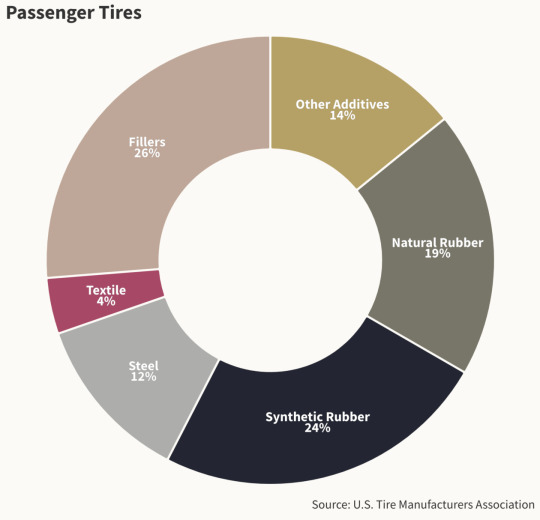
The report says that tires generate 6 million tons of particles a year, globally, of which 200,000 tons end up in oceans. According to Emissions Analytics, cars in the U.S. emit, on average, 5 pounds of tire particles a year, while cars in Europe, where fewer miles are driven, shed 2.5 pounds per year. Moreover, tire emissions from electric vehicles are 20 percent higher than those from fossil-fuel vehicles. EVs weigh more and have greater torque, which wears out tires faster.
Unlike tailpipe exhaust, which has long been studied and regulated, emissions from tires and brakes — which emit significant amounts of metallic particles in addition to organic chemicals — are far harder to measure and control and have therefore escaped regulation. It’s only in the last several years, with the development of new technologies capable of measuring tire emissions and the alarming discovery of 6PPD-q, that the subject is receiving much needed scrutiny.
Recent studies show that the mass of PM 2.5 and PM 10 emissions — which are, along with ozone and ultrafine particles, the world’s primary air pollutants — from tires and brakes far exceeds the mass of emissions from tailpipes, at least in places that have significantly reduced those emissions.
The problem isn’t just rubber in its synthetic and natural form. Government and academic researchers are investigating the transformations produced by tires’ many other ingredients, which could — like 6PPD — form substances more toxic than their parent chemicals as they break down with exposure to sunlight and rain.
“You’ve got a chemical cocktail in these tires that no one really understands and is kept highly confidential by the tire manufacturers,” said Nick Molden, the CEO of Emissions Analytics. “We struggle to think of another consumer product that is so prevalent in the world, and used by virtually everyone, where there is so little known of what is in them.”
“We have known that tires contribute significantly to environmental pollution, but only recently have we begun to uncover the extent of that,” said Cassandra Johannessen, a researcher at Montreal’s Concordia University who is quantifying levels of tire chemicals in urban watersheds and studying how they transform in the environment. The discovery of 6PPD-q has surprised a lot of researchers, she said, because they have learned that “it’s one of the most toxic substances known, and it seems to be everywhere in the world.”
Regulators are playing catch up. In Europe, a standard to be implemented in 2025, known as Euro 7, will regulate not only tailpipe emissions but also emissions from tires and brakes. The California Environmental Protection Agency has passed a rule requiring tire makers to declare an alternative to 6PPD-q by 2024.
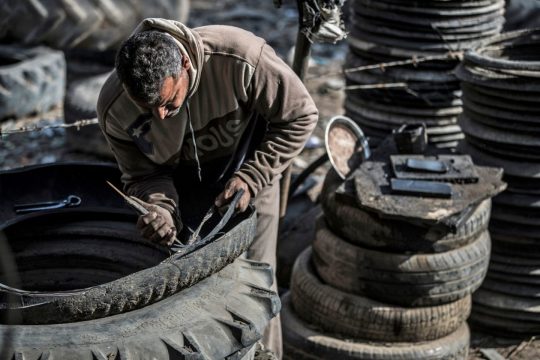
(A worker takes apart a tire at a recycling shop in Mit al-Harun, Egypt.)
Tire companies are conducting their own studies of 6PPD, which they have long considered critical for tire safety, and seeking alternatives. In response to new regulations and the emerging research on tire emissions, 10 of the world’s large tire manufacturers have formed the Tire Industry Project to “develop a holistic approach to better understand and promote action on the mitigation” of tire pollution, according to a statement by the project. The group has committed to search for ways to redesign tires to reduce or eliminate emissions.
One critical area of research is how long tire waste, and its breakdown products, persist in the environment. “A five-micron piece of rubber shears off the tire and settles on the soil and sits there a while,” said Molden. “What, over time, is the release of those chemicals, how quickly do they make their way into the water, and are they diluted? At the system level, how big of a problem is this? It is the single biggest knowledge gap.”
Another area of research centers on the impacts of aromatic hydrocarbons — including benzene and naphthalene — off-gassed by synthetic rubber or emitted when discarded tires are burned in incinerators for energy recovery. Even at low concentrations, these compounds are toxic to humans. They also react with sunlight to form ozone, or ground-level smog, which causes respiratory harm. “We have shown that the amount of off-gassing volatile organic compounds is 100 times greater than that coming out of a modern tailpipe,” said Molden. “This is from the tire just sitting there.”
When tires reach their end of life, they’re either sent to landfills, incinerated, burned in an energy-intensive process called pyrolysis, or shredded and repurposed for use in artificial turf or in playgrounds or for other surfaces. But as concern about tire pollutants grows, so do concerns about these recycled products and the hydrocarbons they may off-gas. There is ongoing debate over whether crumb rubber, made from tire scraps, poses a health threat when used to fill gaps in artificial turf. Based on several peer-reviewed studies, the European Union is instituting stricter limits on the use of this material. Other studies, however, have shown no health impact.
Besides California’s requirement to study alternatives to 6PPD, there are a number of efforts worldwide to redesign tires to counter the problems they pose. More than a decade ago, tire makers hoped that dandelions, which produce a form of rubber, and soy oil could provide a steady and sustainable supply of rubber. But tires made from those alternatives didn’t live up to expectations: they still required additives. The Continental Tire Company, based in Hanover, Germany, markets a bicycle tire made of dandelion roots. Tested by Emission Analytics, it emitted 25 percent fewer carcinogenic aromatics than conventionally made bike tires, but the plant-powered tire still contained ingredients of concern.
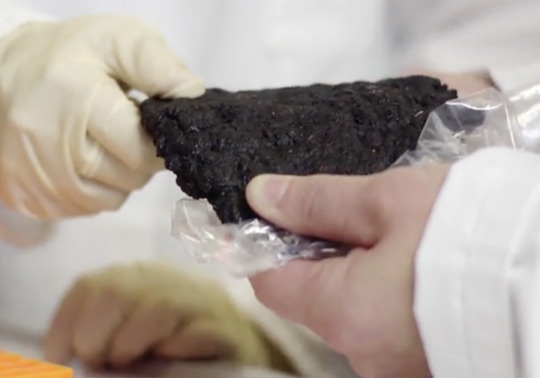
(Rubber made from dandelions.)
Other companies are searching for ways to address the problem of tire emissions. The Tyre Collective, a clean-tech startup based in the U.K., has developed an electrostatic plate that affixes to each of a car’s tires: The plates remove up to 60 percent of particles emitted by both tires and brakes, storing them in a cartridge attached to the device. The particles can be reused in numerous other applications, including in new tires.
In San Francisco, scientists studying the pollutants in storm runoff found a potential solution: Rain gardens, installed in yards to capture stormwater, were also trapping 96 percent of street litter and 100 percent of black rubbery fragments. In Vancouver, B.C. researchers found that rain gardens could prevent more than 90 percent of 6PPD-q from running off roads and entering salmon-bearing streams.
Tire waste particles, says Molden, of Emissions Analytics, are finally getting the attention they deserve, thanks in part to California’s rule requiring a search for alternatives to 6PPD. The legislation “is groundbreaking,” he says, “because it puts the chemical composition [of tires] on the regulatory agenda.” For the first time, he adds, “Tire manufacturers are being exposed to the same regulatory scrutiny that car manufacturers have been for 50 years.”
8 notes
·
View notes
Text
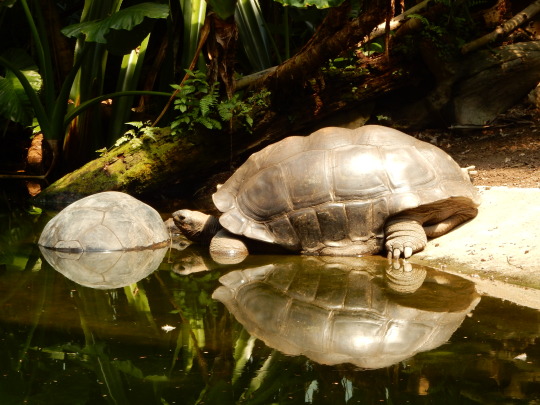

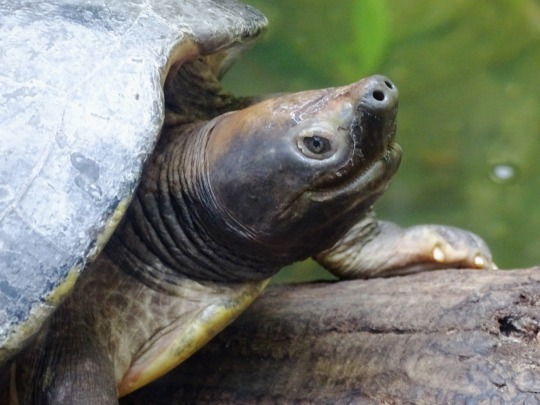
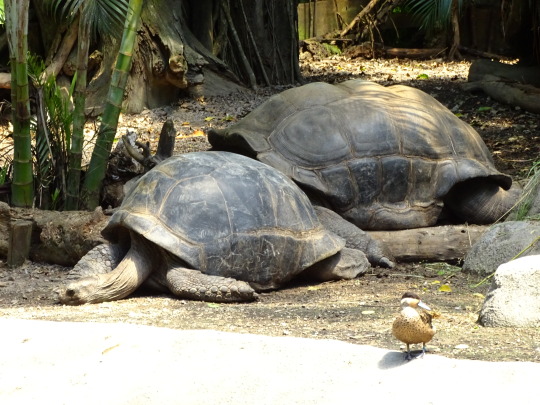
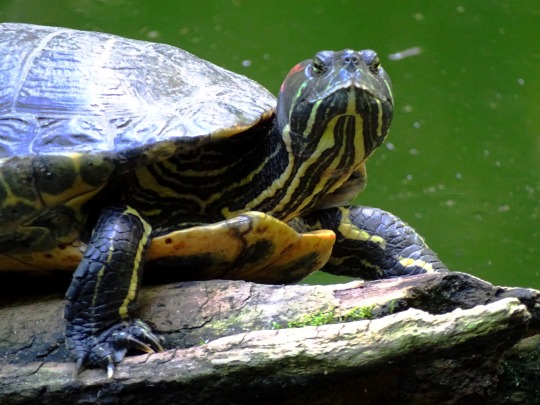
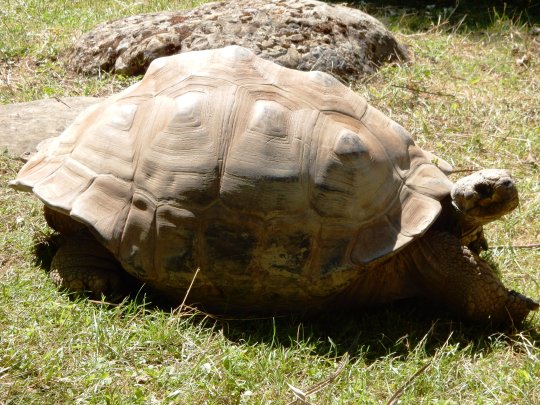
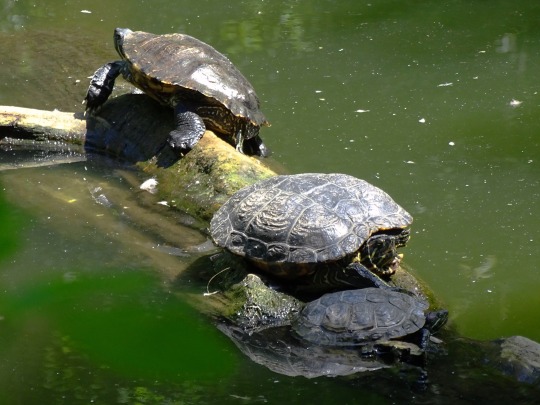
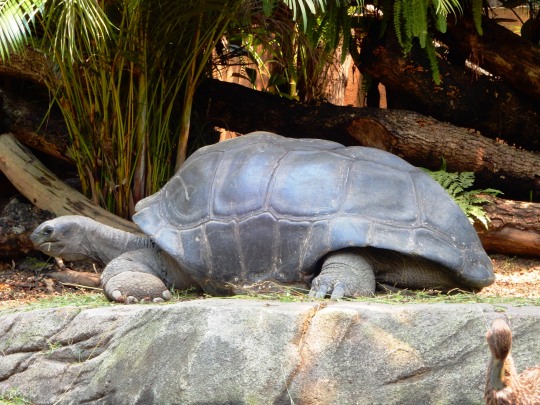

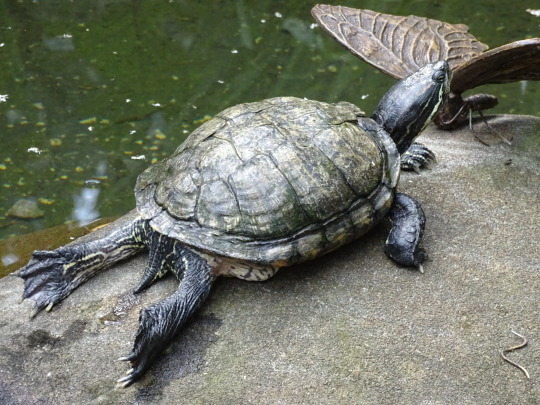
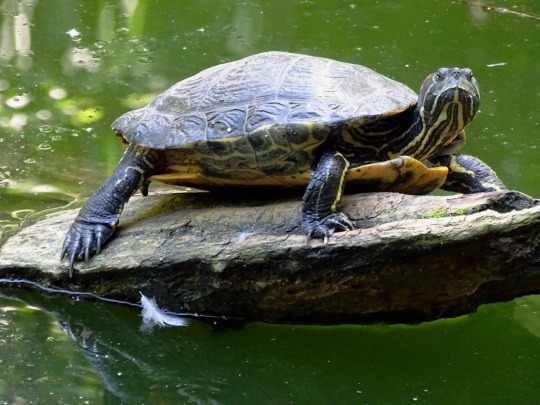
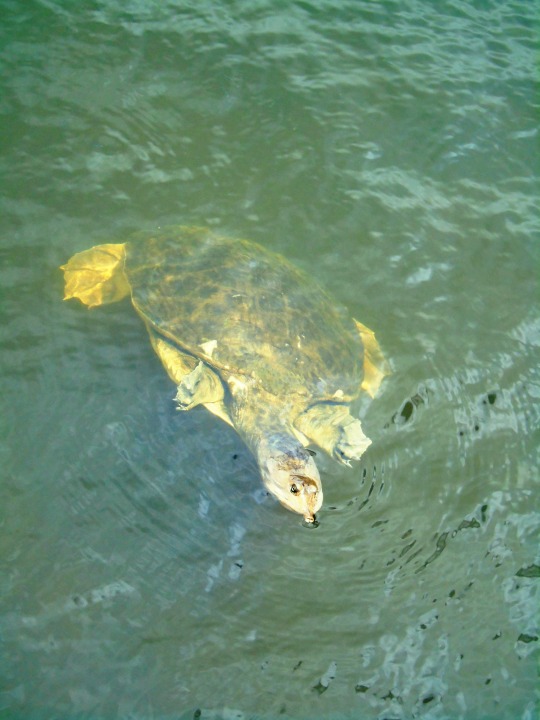

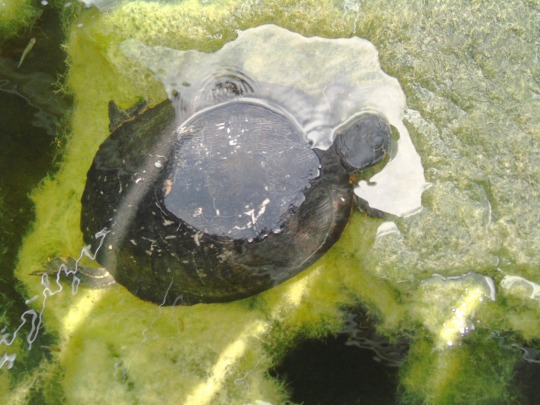
World Turtle Day
World Turtle Day is celebrated on May 23 of every year. The World Turtle Day promoted yearly since 2000 by American Tortoise Rescue which is to bring attention to increase knowledge of and respect for, turtles and tortoises, that inspire human action to help them survive and succeed.World Turtle Day is celebrated around the spheroid in a variation of ways, from dressing up as turtles also by wearing green summer dresses to saving turtles caught on roadways, to research projects. Turtle Day lesson plans and craft designs promote teaching about turtles in classrooms. World Turtle Day is also to celebrate the great reptiles with their place in the world, and this encourages people to take action to protect them, both the common pet turtle and the ever jeopardized sea turtle.
“World Turtle Day is an annual opportunity to reflect on the myriad of threats facing turtles and tortoises and what we can do to protect them.”
History of World Turtle Day
World Turtle Day was created by American Tortoise Rescue in 1990. The term “WORLD TURTLE DAY” is branded by Susan Tellem of Malibu, California American Tortoise Rescue is certified by state and federal companies as a nonprofit corporation to provide for the protection of all species of tortoise and turtle. Orphans that cannot affirm because of ill health remain in the care of American Tortoise Rescue for the balance of their lives. Chase’s Book of Annual Events, the day was created as an annual observance to help people to protect turtles and tortoises and to disappear their habitats globally. Susan Tellem and Marshall Thompson are the founders of the rescue American Tortoise Rescue defend the humane treatment of all animals, containing reptiles. Since 1990, ATR has placed about 3,000 tortoises and turtles in caring homes and also assist law enforcement when undersize and compromised turtles are impounded and provides helpful information which has referrals to persons with sick and abandoned turtles.
In 2013, For over 5,500 students, 160 free Turtle Day Lesson planned and teaching materials were sent out to classrooms. Lesson plans were provided by the Turtle and Tortoise Preservation Group, an organization that is open to all people interested in the welfare of chelonians.
How to Celebrate World Turtle Day
Celebrate the World Turtle Day around the spheroid in a contrast of ways, from dressing up as turtles by wearing green summer dresses to rescuing turtles caught on roadways, to research projects. They’re the astonishing creature, with positive grades making great pets and helping to preserve the eco-system in the waters they live in. Also if we live where snapping turtles haunt the waters, it’s probably a good idea that people know how to withdraw them and where to find them.
Source
#Red-eared Slider#World Turtle Day#WorldTurtleDay#Shellebrate#23 May#Bronx Zoo#Zoo Zürich#Zurich#Schweiz#Switzerland#flora#fauna#water#original photography#Aldabra giant tortoise#Radiated tortoise#USA#Giant South American River Turtle#Galápagos tortoise#everything is Due South#Spider tortoise#reptile#New York City#animal#reflection#travel#vacation#tourist attraction#I really love the first pic#wildlife
3 notes
·
View notes
Text
Excerpt from this story from Yale Environment 360:
Strong winds sweep over the Rhön, a vast region of rolling, forested hills and pastureland in central Germany. Undeterred, Stefan Zaenker, leading a group of four volunteers, runs through his checklist alongside a forest road. Are rubber boots disinfected to prevent introducing potentially harmful microorganisms into the wetland? Are the team app and GPS functioning correctly? Have enough flags been packed?
When all is in order, Zaenker, 56, leads the group into a soggy alder forest. Its mission for the day: to locate and map as-yet-undiscovered springs and document any species inhabiting them.
A senior conservation official for the state of Hesse, Zaenker considers springs so important for human life and biodiversity that he — along with volunteers from the Hesse Association for Cave and Karst Research — spends much of his spare time conducting large-scale searches for them in the Rhön, which includes the German states of Bavaria, Thuringia, and Hesse, and in a nearby national park.
Conservation strategies around the globe focus on rivers, bogs, forests, reefs, and many other habitat types. Springs rarely get any special attention. In the United States, for example, springs do “not appear to be a prominent feature on the conservation radar,” says Kirsten Work, a zoologist from Stetson University in DeLand, Florida.
But for the biosphere, these tiny spots dotted across Earth’s land surface play a powerful role: They connect reservoirs of groundwater to the outside, sunlit world. Only so-called “fossil” aquifers — ancient bodies of groundwater that do not recharge — lack a link with the surface. Without a continual connection to groundwater, which also feeds rivers, many landscapes would quickly dry up and become hotter. In addition, springs are home to a wide range of highly specialized species, some of which live outside by night and in the darkness of groundwater by day.
Far too little is known about where springs occur and what species they harbor, Zaenker says. In a country like Germany, which has no wilderness but a very efficient bureaucracy, most people assume that everything in nature has already been discovered and mapped. This is not true, he claims: “I can stand right next to an impressive spring with water flowing out, but the official topographical map shows nothing.” Official maps denote springs with a blue dot, indicating they are habitats protected by law. Yet many — if not most — springs remained undocumented. “How are we going to effectively protect these important habitats or know if they dry up,” asks Zaenker, “if we don’t even know they exist?”
Halfway around the globe, ecologist Larry Stevens is on a similar mission and is equally worried about the future of springs. In 2013, Stevens cofounded the Springs Stewardship Institute, a nonprofit science initiative linked with the Museum of Northern Arizona, and in 2023 he published Springs of the World: Distribution, Ecology, and Conservation. Stevens considers springs prime examples of “canaries in coal mines” because they act as early warning systems of water table decline and biodiversity loss.
Stevens is particularly fascinated by the large number of highly specialized and endemic species found in and around springs. He points out that with constant temperatures and high purity, spring water offers unique living conditions. Springs are often isolated from one another geographically and many have been in place for millennia, characteristics that make them hotspots for new species to arise and refuges for species that have lost their habitats elsewhere. “Although miniscule in habitat area compared to rivers, lakes, and oceans, springs support more than 10 percent of U.S. endangered species, as well as thousands of other rare and endemic biota,” he notes. For example, the so-called Comal Springs riffle beetle is limited to a few springs in Texas, while the endangered White River springfish lives only in isolated warm springs in eastern Nevada.
While there are many spectacular springs — like the white Pamukkale terraces of Turkey, Blue Spring in New Zealand, or the hot springs in Yellowstone National Park — most are rather inconspicuous. That doesn’t diminish their importance, though. Every creek, river, pond, and lake starts with at least one, and often many, springs.
13 notes
·
View notes
Text
Chinese merchant ships that appear to take an unusual interest in ocean floor infrastructure are not the only things causing disorder in the Baltic Sea. In recent months, automatic identification system (AIS) spoofing has been increasing there, too. Since these systems exist to allow ships to know where they and other ships are, manipulation that shows vessels being somewhere completely different is not a trivial matter. But Western governments can’t do very much about it—and other countries could adopt the subversive practice, too.
The Yi Peng 3, a Chinese bulk carrier, has emerged as the prime suspect in the Baltic Sea cable cuts in November. After the incident, the vessel made its way westward, toward the Atlantic but anchored in the Kattegat Strait between Denmark and Sweden. It has remained there, watched by Danish naval vessels (as the ship is in Denmark’s exclusive economic zone) and sometimes by Swedish and German coast guard vessels, as well.
But other vessels are also causing headaches for Scandinavian governments. Pekka Niittyla of the Finnish Coast Guard told Reuters that ships sailing through the Gulf of Finland in recent weeks have been turning off their AIS. Lulu Ranne, Finland’s minister of transport and communications, said Russia is likely interfering with navigation systems. That matters because the Gulf of Finland and the rest of the Baltic Sea are busy waters with narrow and congested shipping lanes.
Satellite navigation systems, which help ship crews know their location and that of other vessels, are indispensable in modern shipping and to modern economies. Last year, the United Kingdom’s government calculated that Global Navigation Satellite Systems (GNSS) provide economic benefits of 13.6 billion pounds (some $17.2 billion) each year. Ships, in turn, are required to use AIS, which signal their location. But now Russia is interfering with those systems—messing both with the satellites that send the signals and with the AIS signals sent from some of the ships themselves.
For ships going about their business in the Baltic Sea, that means they may see a ship very nearby that, according to their radar, is somewhere completely different. “This is something that is coming in the wake of the Ukraine war,” said Nils Wang, a retired admiral and former Danish Navy chief. “We’ve definitely seen an increase since February 2022. The Russians’ ability to engage in AIS spoofing and related disturbances has increased, which seems to be a result of what they’re doing in the Black Sea. They’re becoming very good at it.”
The Black Sea appears to have served as a laboratory for the AIS spoofing now taking place. In 2017, merchant vessels traveling in the Black Sea began reporting mysterious oddities in their locations. They knew roughly where they were, but their radars showed them being somewhere completely different, often on land. An alert issued by the U.S. Maritime Administration read, “A maritime incident has been reported in the Black Sea in the vicinity of position 44-15.7N, 037-32.9E on June 22, 2017 at 0710 GMT. This incident has not been confirmed. The nature of the incident is reported as interference. Exercise caution when transiting this area.”
Since then, AIS incidents linked to Russia have accelerated. In May 2022, C4ADS, a Washington-based nonprofit, reported that it had identified 9,883 suspected instances of such interference across 10 locations that affected 1,311 civilian vessel navigation systems since Feb. 2016. Last year, suspected Russian AIS spoofing created a “Z” pattern of vessels on radar screens. (“Z” is the Russian symbol for the war in Ukraine.)
Now, GNSS and AIS disturbance is growing in the Baltic Sea—hardly a coincidence. The majority of Russia’s shadow fleet—which transports Russian crude above the price cap imposed by Western governments in response to its invasion of Ukraine—travels to and from Russia’s ports in the Gulf of Finland (the Baltic Sea’s easternmost part). Since shadow vessels operate in, yes, the shadows, they take pains not to advertise their position. That means they turn off or spoof their AIS. If someone also interferes with the navigational systems themselves, significant disorder results.
Back in 2022, Danish officials discovered that mysterious GPS dysfunctions on the ferry between the Danish island of Bornholm (which is located southeast of Sweden) and mainland Denmark had been caused by jammers in two trucks. “Disrupting GNSS and GPS is one of the things Russians are extremely good at. It’s also in their interest to spoof AIS, and it’s no surprise that this is primarily taking place in the Gulf of Finland, since it’s the primarily the Finns seeing what goes in and out of Russia’s Baltic Sea ports,” said Anders Grenstad, a retired admiral and former Swedish Navy chief.
Spoofing of identification signals—which can also be achieved through attacks on GPS and similar systems—is also a way of creating disorder without fear of punishment or retaliation. (It is, in other words, perfect gray-zone aggression, which is a type of nonmilitary aggression sometimes referred to as hybrid warfare.)
“This is the Russians’ way of protesting against Sweden’s and Finland’s accession to NATO and the establishment of what people call a ‘NATO lake,’” Wang said. “They’re sending the message that even though NATO dominates the Baltic Sea, they can still engage in subversive actions.” Cheerful Western talk about a NATO lake suggests the Baltic Sea is far more peaceful than it actually is, and it risks triggering not just Russian AIS disturbance but lots of other subversive activities.
That disturbance could result in collisions precisely because ships’ real location is different from what’s on the radar. That means it’s only a matter of time before there’s an accident. AIS jamming makes navigation harder for all ships, but AIS spoofing, which entails creating a false picture, presents a real danger to other ships.
“The Russians circumvent the rules that govern shipping, which undermines the maritime order that we work hard to abide by … The only acceptable reason to switch or spoof is to avoid a piracy attack or other safety concerns,” Line Falkenberg Ollestad, an advisor at the Norwegian Shipowners Association, said.
Collisions would, of course, cause harm to the Baltic Sea’s already weakened maritime environment. “AIS is meant to increase maritime insecurity,” Grenstad said. “Instead, it could cause collisions. That poses enormous dangers to the environment … If ferries or cruise ships collide, it would cause loss of life.”
Fortunately, shipmasters are skilled professionals and often detect when something is iffy with other vessels’ radar locations. “The risk is that if you’re in waters with dense traffic like in the Danish [straits] and the Baltic [Sea], the master will be confused if his GPS doesn’t work or if he sees AIS tracks that he can’t see with radar or with the naked eye,” Wang said. “That means he has to slow down to find out what’s going on. That creates delays.”
Such delays will be exacerbated by the fact that today’s seafarers are used to sailing with digital tools like GPS and AIS. “If you can’t rely on your electronic means, you have to use manual tools, but not too many seafarers are used to that anymore,” Wang said. GPS or AIS disturbance thus risks causing delays, which means delayed arrival of cargo in every subsequent port. That will result in economic harm not just to the affected shipping lines but to countries, too.
What can be done about this menace? Not very much, because NATO is hardly going to use its military might to punish some electronic disturbance. And responsible countries, like the other Baltic Sea states, would never retaliate by, say, spoofing merchant traffic in the Caspian Sea. The spoofing in the Baltic Sea will continue and perhaps even grow, and it’s already being joined by other subversive activities like the severing of undersea cables.
When it comes to navigational interference, other countries should watch the Russians’ experiments in the Baltic Sea and the Black Sea. “This is beginning with Russia because they’re so good at it, but it could spread to China, and Iran, and other countries that have an interest in disguising their activities,” Grenstad said. “It’s incredibly perilous for the international maritime order.”
The NATO lake was never going to be placid.
15 notes
·
View notes
Text

Congressman Kwanza Hall (born May 1, 1971) recognized for his leadership as a civil servant and business executive, was elected in 2020 to complete the term of Congressman John R. Lewis. A large portion of his career has been dedicated to social justice and economic opportunity, in which he combines his various professional experiences including a fellowship with the German Marshall Fund and appointments on the Board of Directors for many nonprofits, including the World Affairs Council and the National Center for Civil and Human Rights.
He was born in Atlanta to Leon W. Hall, Dr. Martin Luther King Jr.’s youngest lieutenant. His mother, Evelyn Cloyd Hall, was a civil rights activist and community organizer. He graduated from Benjamin E. Mays High School and attended MIT until 1995.
He became the IT Senior Project Manager for the Fulton County. He worked as the Vice President of Technology for GoodWorks International. He served as Director of Business Development at MACTEC Engineering and Consulting. He started his 15-year combined stint on the Atlanta City Council and Atlanta School Board. After serving three years as a member of the Board of Education, he was elected to the City Council for District 2 in 2005 where he stayed for 12 years.
He supported key legislation including expanding the beltline overlay and allocating funding for streetscape projects to improve pedestrian safety. He was honored for his advocacy for parks and greenspaces by Park Pride. The Atlanta chapter of the American Institute of Architects created the annual Kwanza Hall Award for civic leadership in architectural design. Georgia State University awarded him the Pioneer Award. The W.K. Kellogg Foundation recognized him. He was a candidate for mayor of Atlanta in 2017.
He served 33 days as the Democratic Representative for Georgia’s 5th district. He was a candidate for Lieutenant Governor of Georgia. He became the Managing Partner at Homz Global and the CEO and Managing Partner at Chattahoochee Trails Park and Water Hub. #africanhistory365 #africanexcellence
2 notes
·
View notes
Text
Reputable charities you can donate to to help Palestinians!
[Summary of charities listed below]
Doctors Without Borders
Mission: Provides emergency medical care to those who need it most, regardless of race, religion, and politics.
Charity Navigator score: 98% reputable (highest on list)
Notes: This charity has worked in Gaza and the West Bank for the last 20 years. It also has offered support to Israeli hospitals dealing with high causalities. This is an International organization so not all donations necessarily go to Palestine. Also this organizations specifically calls for a ceasefire for the sake of Gazans, to lift the siege and allow necessary supplies to cross into Gaza, among other demands.
Donation Link: https://www.doctorswithoutborders.org/latest/our-response-israel-gaza-war
International Committee of the Red Cross
Mission: To help those affected by conflict around the world. It’s neutral workers visit detainees held in both Palestine and Israel. Also helps improve access to essentials like water and electricity.
Charity Navigator score: Unrated due to being based outside of the US.
Notes: While this org has many countries it provides services for, you can specifically donate to Palestine under “Israel and Occupied Territories.” Not every org listed has this option.
Donation Link: https://www.icrc.org/en/donate/ilot
IsraAID
Mission: Global NGO based in Aviv, Israel. Aims to help children and families in crisis. The group claims to house evacuees, operate child-friendly spaces for children to process what has happened and provide safe spaces to play. Also distributes resilience kits to family, among other things.
Charity Navigator score: Unrated due to being based outside of the US.
Notes: While they do claim to provide money and services to Palestinians, all donation are pooled into the same fund, meaning you cannot choose where your money goes. Based in Israel.
Donation link: https://www.israaid.org/donate/
Save The Children
Mission: To assist children in both Gaza and Israel. It’s working with the UN in hopes of renegotiating humanitarian corridors, and has been providing aid to Palestinian children and their families since 1953, it says.
Charity Navigator Score: 97%
Notes: This org has dispersed $1M from their children’s emergency fund to Gaza following the current escalation. Also allows donators to write to their US representatives about the crisis over their site. No specific donations aimed towards Gazans are available on their website.
Donation Link: https://www.savethechildren.org/us/where-we-work/west-bank-gaza
United Nations Children’s Fund
Mission: To improve the lives of children. Active in more than 190 countries. According to them they have staff delivering support in Gaza.
Charity Navigator Score: 92% (still a very high score)
Notes: You cannot choose where your donation goes, it all goes into the same fund. Helping this org provides medical supplies, clean water, food, education materials, and various other things to children who need it the most.
Donation Link: https://www.unicefusa.org/about-unicef-usa/unicef-usa-and-unicef
The United Nations Relief and Workers Agency for Palestine Refugees in the Near East
Mission: To carry out direct relief for Palestinian refugees. According to the org, nearly 6 million people are eligible for their services. Operates in the West Bank (including East Jerusalem), the Gaza Strip, Jordan, Lebanon, and Syria.
Charity Navigator score: Unrated due to being based outside of the US.
Notes: Since October 7th, over 270,000 people have populated it’s shelters, according to them.
Donation Link: https://donate.unrwa.org/-landing-page/en_EN
*Keep in mind not all of the links will work properly on tumblr, still they should work just fine when copy and pasted into your browser
3 notes
·
View notes
Note
Hello Calm Waters!
What astrology placements are good for those who want to work in nonprofits and philanthropy? Thank you! 🤩✨
Hi, anon! 👋
My immediate thought was the 9th house and Jupiter. Jupiter is all about expansion, growth, abundance, and generosity. Neptune would be a close contender, as well, since it rules over Pisces, the zodiac sign that enjoys helping other people and can be extremely compassionate. I could also see the Moon's (Cancer) energy working here, as well as the Sun, Mars, and Pluto (for personal power and getting stuff done).
So, any major aspects between Jupiter and Neptune, Jupiter/Sun, Neptune/Sun, Jupiter/Moon, and Neptune/Moon would be the first thing I'd look at. Sun, Mars, and Pluto are bonuses.
The next thing I'd look at are the houses. I talked about the 9th house, but the 6th house is the house of service to others, so if you have placements there, you could feel a strong need to assist people in some way.
I'll include the 11th house if you want to help on a more global scale rather than a smaller nonprofit or a local community.
Don't worry if you don't have all of these placements. One or two could be enough to make you want to do more.
#astrology#natal chart#natal astrology#9th house#jupiter#neptune#moon#sun#mars#philanthropy placements#work for a nonprofit placements#6th house#11th house
2 notes
·
View notes